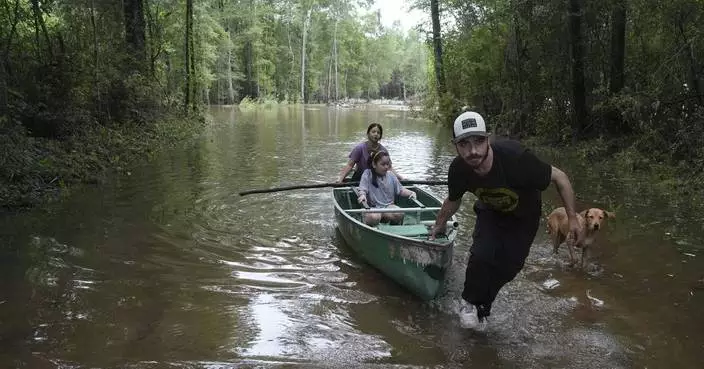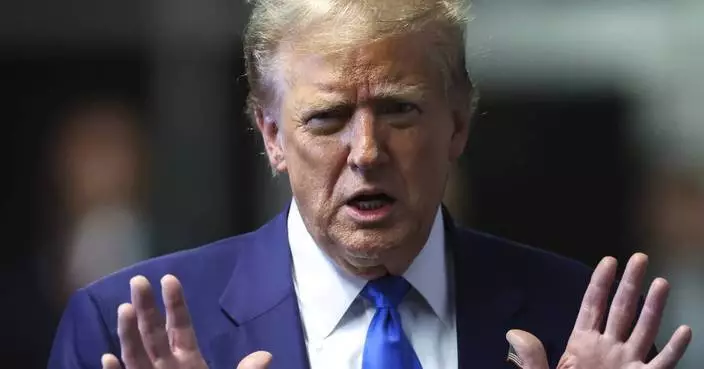HANOI, Vietnam--(BUSINESS WIRE)--Apr 24, 2024--
FPT Corporation signed Letter of Cooperation with the United States Agency for International Development’s (USAID) Vietnam Low Emission Energy Program II (V-LEEP II), with the goal of supporting the corporation in achieving the Net Zero target by 2040, a decade earlier than Vietnam's commitment. FPT is Vietnam’s first technology firm to collaborate with V-LEEP II.
This press release features multimedia. View the full release here: https://www.businesswire.com/news/home/20240423349833/en/
In accordance with the agreements, V-LEEP II will provide technical assistance to FPT from April 2024 to April 2025 as the corporation formulates a plan to execute its net-zero commitments. This entails providing a comprehensive understanding of Net Zero strategy, as well as general insights about advanced clean energy development, such as the Direct Power Purchase Agreement mechanism, Renewable Energy Certificates, Battery Energy Storage Systems, Rooftop Solar Development for Self-consumption, and other relevant topics. In addition, V-LEEP II will also support FPT with capacity-building programs in a variety of areas and connect FPT with leading experienced renewable energy developers to gain more experience in the deployment and use of advanced clean energy, thereby reducing greenhouse gas emissions and becoming carbon neutral.
“Our collaboration with USAID aligns with our commitment to spearheading initiatives to mitigate the impact of greenhouse gas emissions in Vietnam. We aim to positively impact the living, working, and learning environments for both 1 million FPT employees globally by 2035 and society at large. FPT will steadfastly pursue the mission of establishing a resilient, happy global corporation,” said FPT Senior Executive Vice President Nguyen The Phuong.
FPT’s subsidiary FPT Software also signed the Letter of Cooperation with USAID’s V-LEEP II. “FPT Software has the mission to support the growth of the nation, and we are also committed to aligning with our global clients on sustainable development efforts. FPT Software cares about the future of our people and the planet, and we strive to be an active member of a green, sustainable ecosystem. The support from USAID is important for us to achieve this goal,” said FPT Software Senior Executive Vice President Nguyen Khai Hoan.
“FPT is the future of Vietnam business. It is powerful that FPT is thinking about the future, and I hope that will positively influence Vietnam’s younger generations and business community. We are excited to be part of this progress together with FPT towards a sustainable future,” shared at the event today by USAID/Vietnam Deputy Mission Director Bradley Bessire.
FPT is actively conducting measures and activities to reduce energy consumption and reduce greenhouse gas emissions, notably building green and environment-friendly workplace, planting trees for carbon offsets, offering discounts for employees buying electric vehicles, and ensuring all employees receive annual training on environmental protection. Leveraging its technology expertise, FPT constantly implements internal digital transformation towards a paperless business model, with more than 100,000 e-contracts signed in 2023, an increase of 6.6% compared to 2022. FPT is the trusted partner in green transformation, providing consulting services and comprehensive solutions related to ESG, such as the carbon audit solution VertZéro. FPT recently published its ESG report, highlighting its ongoing commitment to the highest standards of sustainable development through four key areas, including Environmental Sustainability, Work Environment, Social Responsibility, and Excellent Governance.
About FPT Corporation and FPT Software
FPT Corporation is a global technology corporation and a leader in consulting, providing, and deploying technology and telecommunications services and solutions. It records a global workforce of 48,000+ and total revenue of $2.17 billion (2023).
FPT Software, a subsidiary of FPT Corporation, is a global technology and IT services provider headquartered in Vietnam, with $1 billion in revenue (2023) and over 30,000 employees in 30 countries.
The company champions complex business opportunities and challenges with its world-class services in Advanced Analytics, AI, Digital Platforms, Cloud, Hyperautomation, IoT, Low-code, and so on. It has partnered with over 1,000+ clients worldwide, 91 of which are Fortune Global 500 companies in Aviation, Automotive, Banking, Financial Services and Insurance, Healthcare, Logistics, Manufacturing, Utilities, and more. For more information, please visit https://fptsoftware.com/
About USAID V-LEEP II Program
USAID/Vietnam supports an “open, prosperous, and secure Vietnam that is effective and inclusive in tackling its own development challenges.” USAID/Vietnam’s flagship clean energy program, the Vietnam Low Emission Energy Program II (V-LEEP II), aims to advance Vietnam’s transition to a clean, secure, and market-based energy sector through three main objectives: (1) Increased deployment of advanced energy systems, (2) Improved energy sector performance, and (3) Increased energy sector competition.


The signing ceremony was attended by FPT Corporation Senior Executive Vice President Nguyen The Phuong, FPT Software Senior Executive Vice President Nguyen Khai Hoan, and USAID/Vietnam Deputy Mission Director Bradley Bessire (Photo: Business Wire)
LITTLE ROCK, Ark. (AP) — When Arkansas lawmakers decided five years ago to replace the statues representing the state at the U.S. Capitol, there was little objection to getting rid of the existing sculptures. The statues that had stood there for more than 100 years were obscure figures in the state's history.
“I remember giving tours to constituents from Arkansas, to young people, and I would point out the two representatives in Statuary Hall in our United States Capitol from Arkansas,” said former Gov. Asa Hutchinson, who also served in Congress. “And they would say, ‘We’ve never heard of them.’”
Instead of two little-known figures from the 18th and 19th centuries, the state will soon be represented by the “Man in Black” and a woman who was instrumental in the fight over school desegregation.
Officials plan to install statues of civil rights leader Daisy Bates this week and musician Johnny Cash later this year.
Bates, who headed the state NAACP, mentored the Black students known as the Little Rock Nine who integrated Central High School in 1957. She is a well-known civil rights figure in Arkansas, where a downtown street in the capital, Little Rock, is named in her honor. The state also marks Daisy Bates Day on Presidents Day.
Benjamin Victor, the Idaho sculptor who was chosen to create the statue of Bates, said he began his work by extensively studying her, including reading her 1962 autobiography and visiting her Little Rock home and Central High. He said he hopes the statue will help U.S. Capitol visitors learn more about her as well.
“I hope it really first and foremost inspires them to study Daisy Bates' life and legacy,” Victor said. “A big part of it is to capture that spirit of hers and inspire others to do the same and stand up for what’s right.”
The 8-foot tall bronze statue depicts Bates, who with her husband published the Arkansas State Press newspaper, walking with a newspaper in her arm. She holds a notebook and pen in one hand and wears a NAACP pin and rose on her lapel.
Cash was born in Kingsland, a tiny town about 60 miles (100 kilometers) south of Little Rock. He died in 2003 at age 71. His achievements include 90 million records sold worldwide spanning country, rock, blues, folk and gospel. He was among the few artists inducted into both the Country Music Hall of Fame and Rock & Roll Hall of Fame.
The 8-foot (2.4-meter) tall statue of Cash depicts the singer with a guitar slung across his back and a Bible in his hand. Little Rock sculptor Kevin Kresse, who was selected to create the statue, has sculpted other musical figures from Arkansas such as Al Green, Glen Campbell and Levon Helm.
Kresse views Cash as a much-needed addition to the Capitol as a counterbalance to the conflict in Congress, he said.
“He walked the walk and he lived what he believed. And that was just this quality that really appealed to me,” Kresse said. “And that interior thoughtfulness was something that I really wanted to try to bring out in this sculpture.”
The Bates and Cash statues will replace ones depicting James P. Clarke, a former governor and U.S. senator in the late 1800s and early 1900s, and Uriah Rose, a 19th century attorney. The statues had come under scrutiny, especially over racist comments Clarke made calling on the Democratic Party to preserve “white standards.”
Republican Sen. Bart Hester, a Republican who is now the Senate president pro tem, began calling for the statues to be replaced in 2018. Clarke Tucker, Clarke's great-great-grandson and a Democratic state senator, also called for his ancestor's statue to come down.
“There was recognition broadly that it was time for a change,” said Hutchinson, who signed the 2019 law requiring the Bates and Cash statues to go up.
Choosing their replacements was the hard part, with lawmakers offering competing ideas ranging from Walmart founder Sam Walton to a Navy SEAL from the state who was killed in Afghanistan. After some wrangling, lawmakers eventually approved Bates and Cash.
Sen. David Wallace, who sponsored the legislation to replace the previous sculptures, said he hoped the new statues would tell people more about the types of figures Arkansas has produced over the years.
“We wanted to do the common person that represented Arkansas,” Wallace said. “And I think that with Daisy Bates and with Johnny Cash, we covered the spectrum in Arkansas. Just, they represent the common folks of Arkansas.”
Associated Press reporter Mike Pesoli contributed to this report.
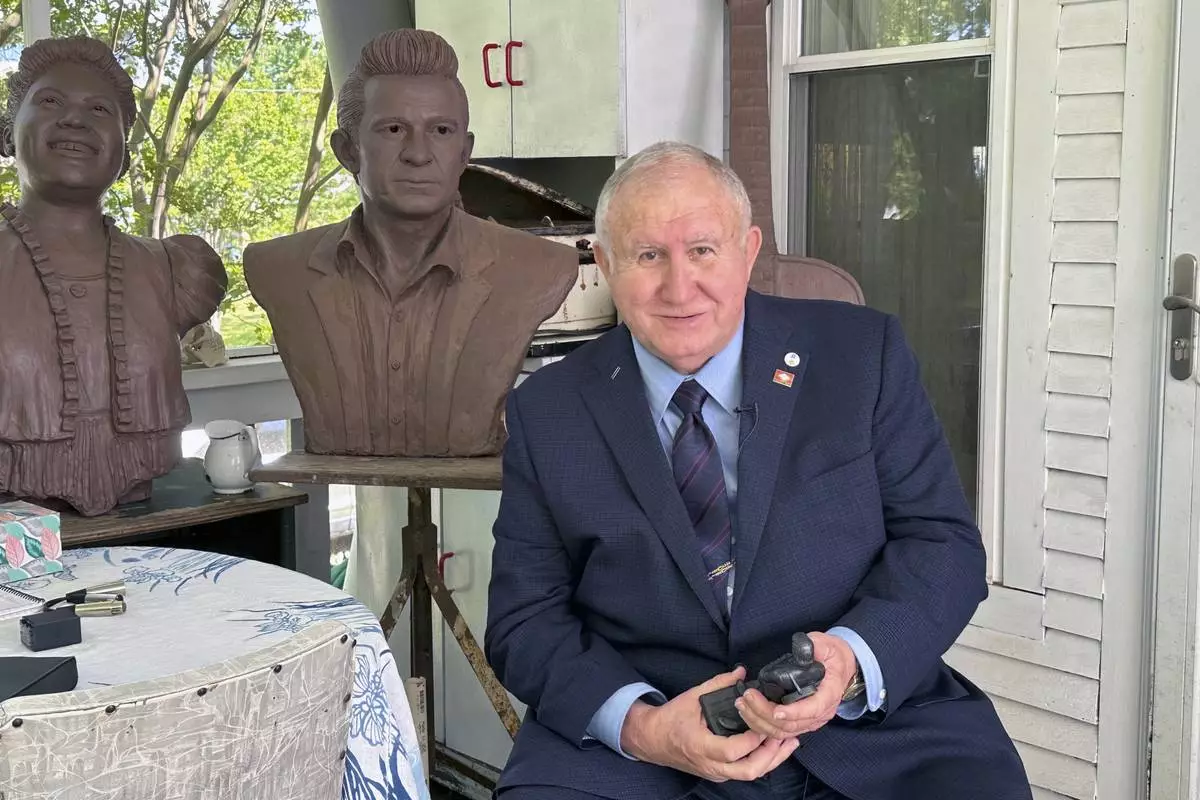
Arkansas State Sen. David Wallace holds a small-scale statue of Johnny Cash, on April 23, 2024, in Little Rock, Ark. Artist Kevin Kresse's full sculpture of Cash will be unveiled at the U.S Capitol as part of the Statuary Hall collection, later this year. (AP Photo/Andrew DeMillo)
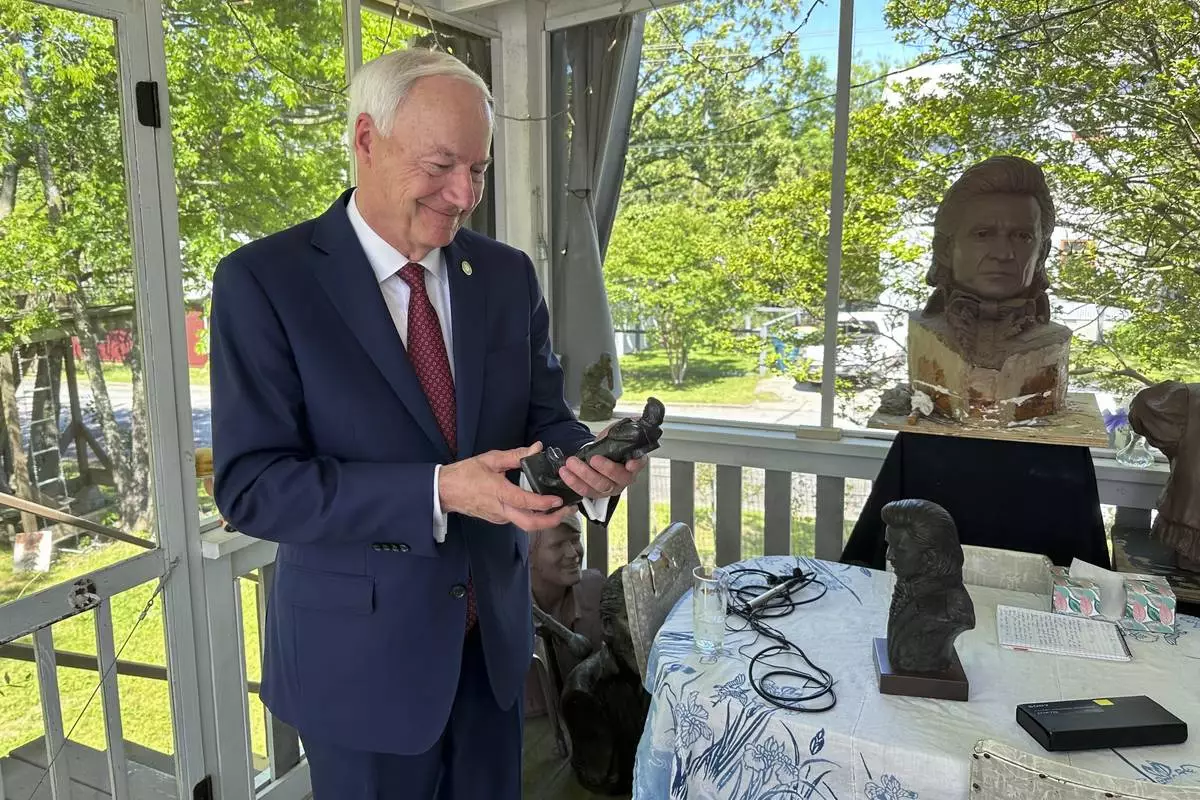
Former Arkansas Gov. Asa Hutchinson holds a small-scale statue of Johnny Cash, on April 23, 2024, in Little Rock, Ark. Artist Kevin Kresse's full sculpture of Cash will be unveiled at the U.S. Capitol as part of the Statuary Hall collection, later this year. (AP Photo/Andrew DeMillo)
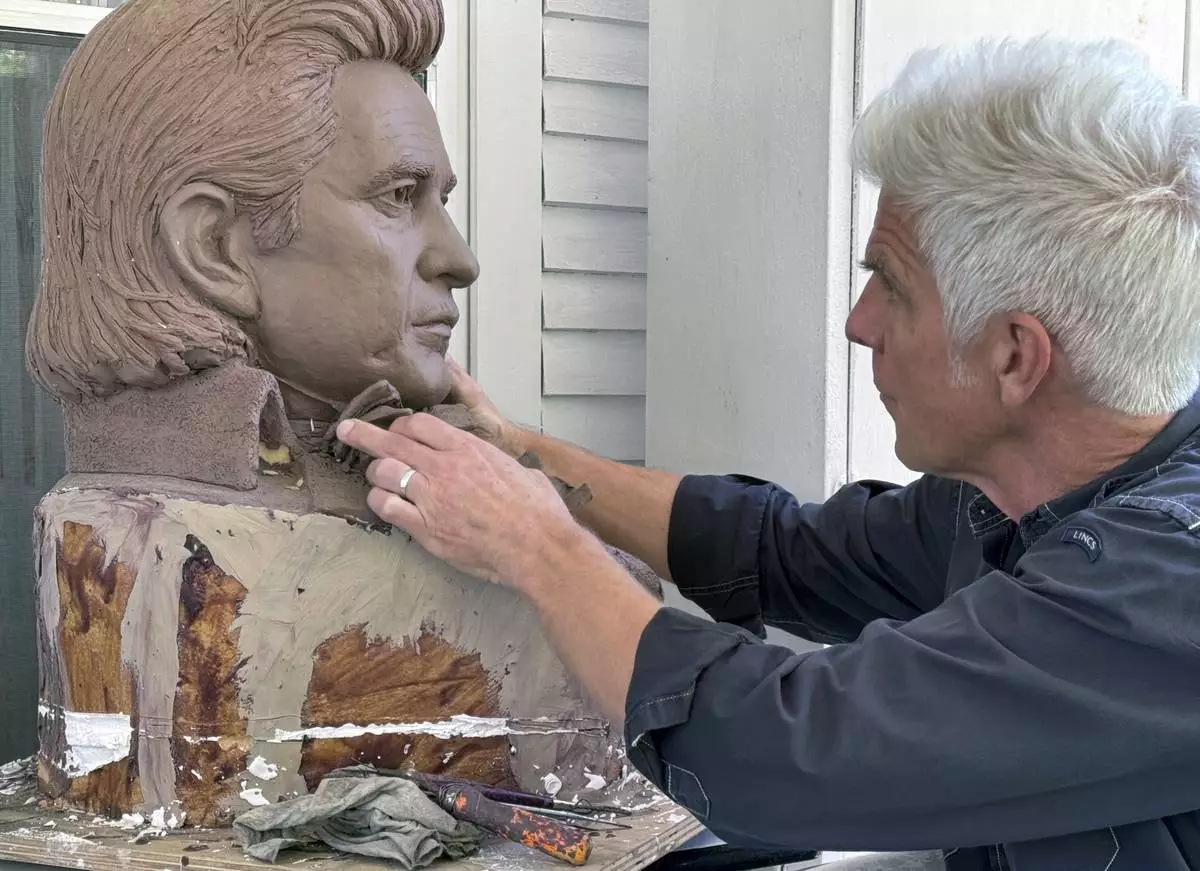
Artist Kevin Kresse, works on a clay bust of Johnny Cash, April 23, 2024 in Little Rock, Ark. Kresse's full sculpture of Cash will be unveiled at the U.S. Capitol as part of the Statuary Hall collection, later this year. (AP Photo/Mike Pesoli)

Artist Kevin Kresse, works on a clay bust of Johnny Cash, April 23, 2024 in Little Rock, Ark. Kresse's full sculpture of Cash will be unveiled at the U.S. Capitol as part of the Statuary Hall collection, later this year. (AP Photo/Mike Pesoli)
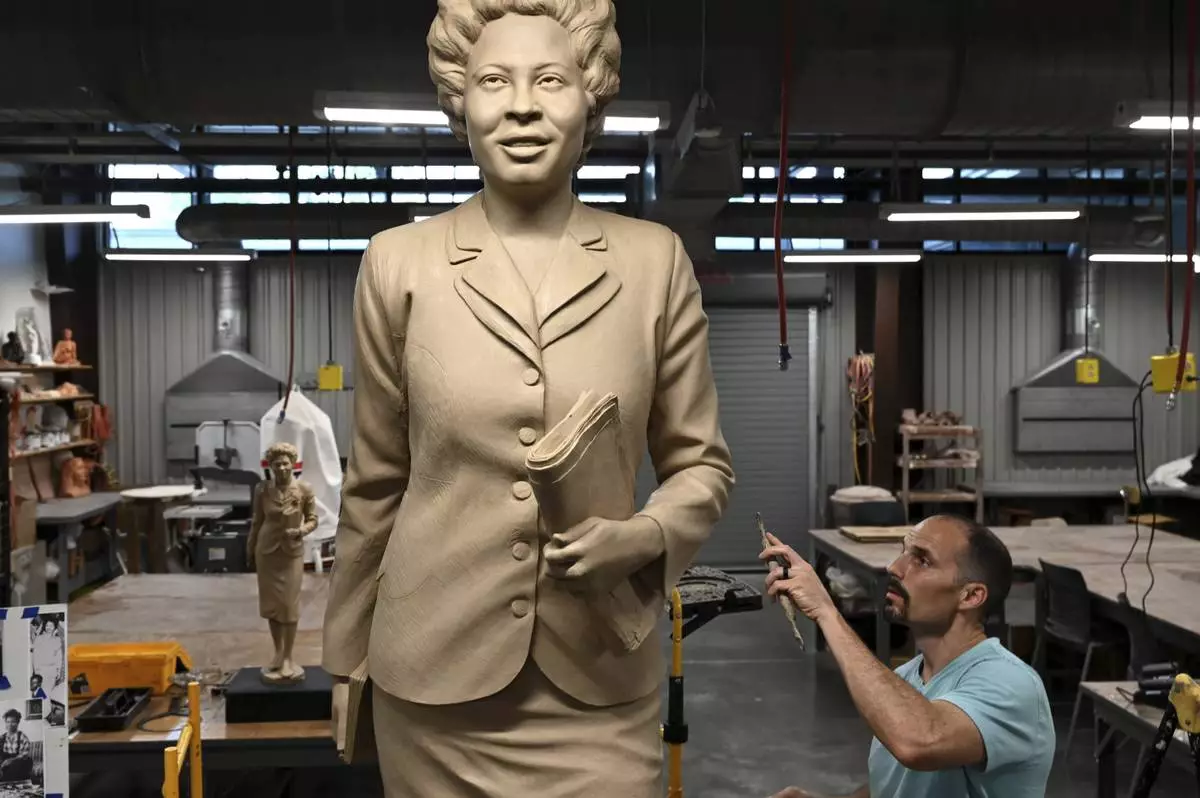
Benjamin Victor works on his sculpture of Daisy Gatson Bates at the Windgate Center of Art and Design at the The University of Arkansas at Little Rock campus on Monday, April 25, 2022, in Little Rock, Ark. The statue will be placed in the Statuary Hall in the United States Capitol when it is completed. (Stephen Swofford/Arkansas Democrat-Gazette via AP)

Artist Kevin Kresse, is shown with a clay bust of Johnny Cash, April 23, 2024 in Little Rock, Ark. Kresse's full sculpture of Cash will be unveiled at the U.S. Capitol as part of the Statuary Hall collection, later this year. (AP Photo/Mike Pesoli)












